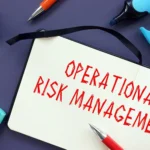This article explores the importance of robust governance, risk, and compliance (GRC) management in the banking sector. It outlines best practices for effective GRC management, including defining roles, encouraging transparency, implementing risk management frameworks, maintaining regulatory compliance, and incorporating digital solutions. By adopting these strategies, banks can enhance accountability, operational efficiency, and long-term success while navigating an ever-changing regulatory landscape.
The banking industry has experienced some of the most unprecedented transformations in recent years. To navigate the complex regulatory landscape while ensuring success, safeguarding reputation, and stakeholder trust, banks must maintain strong and effective governance, risk, and compliance (GRC) management systems. It helps banks to anticipate and manage potential business risks and ensure they remain compliant with industry regulations and standards.
This article discusses the best practices for effective governance, risk, and compliance (GRC) management in the banking sector.
Best Practices for Effective Governance, Risk, and Compliance in Banking
Governance, risk, and compliance are the three main components of GRC.
-
Governance
Provides the structure and oversight for the banks to operate effectively and ethically,
-
Risk management
Helps the banks identify, assess, mitigate and monitor potential risks that could impact their long-term and short-term goals.
-
Compliance management
It is also critical to ensure banks’ adherence to regulatory compliance requirements and industry standards.
Below are some of the best practices that banks and financial institutions can implement for effective GRC management.
-
Define Roles and Duties
For effective decision-making and oversight, the management, directors, executives, and other stakeholders must have clearly defined roles and responsibilities. Setting performance standards, reviewing progress, and holding individuals accountable for their actions are all part of this.
-
Encourage Transparency and Communication
Banks must create communication channels amongst all the stakeholders and encourage the sharing of information and comments that align with the bank’s goals and objectives.
-
Promote Diversity and Inclusion
An inclusive board of directors, executives, and management team can provide valuable perspectives and boost decision-making with better insights required for effective governance.
-
Implement Effective Risk Management
A strong enterprise risk management framework is also an important part of good governance. Banks must define their risk appetite, and tolerance level, and consider all relevant risks and compliance requirements to identify, assess, mitigate, monitor, and report risks regularly.
-
Maintain High Ethical Standards
Banks and financial institutions need to maintain high ethical standards and foster decision-making. Banks must ensure that their actions are consistent with their organizations’ values and principles to avoid unethical behavior.
-
Identify and Analyze Risks
Banks must identify and assess risks on a regular basis by utilizing a comprehensive enterprise risk management framework that considers all sorts of risks, such as operational, liquidity, credit, reputational, and market concerns.
-
Determine Risk Appetite and Tolerance Levels
Determining the risk appetite and tolerance levels of the bank is crucial as it guides decision-making and ensures that risks are managed within acceptable limits.
-
Regular Audits
Conduct regular internal and external audits to identify, assess and monitor the areas for improvement for a robust GRC process.
-
Form a GRC Committee
Create a GRC committee involving the board of directors with cross-functional representation.
-
Apply Risk Mitigation Techniques
Applying risk mitigation techniques is important to effectively manage the identified risks. This includes building contingency plans to address potential crises and adopting controls, rules, and procedures to help efficiently prevent, reduce the impact, or mitigate risks.
-
Risk Monitoring and Review
Banks need to constantly identify, monitor and review their risks and risk controls to ensure that their risk management techniques remain effective and risks are within acceptable limits.
-
Include Risk Management in Decision-Making
Banks must incorporate risk management into their decision-making processes to make better decision while making strategic and operational choices in their line of business.
-
Maintain Regulatory Compliance
Banks must comply with regulatory requirements and industry standards. This includes adherence to the laws, rules, regulations and standards that can affect their operations and business activities.
-
Educate Employees
Banks must train and educate their staff on GRC awareness, principles, and practices to ensure that they understand the importance of GRC, the bank’s policies and processes, and their roles and duties.
-
Incorporate Digital Solutions
Adopt and incorporate the use of AI and ML-powered digital solutions to automate and support GRC activities, including transaction monitoring, risk assessment, watchlist screening, compliance monitoring, and risk reporting.
By implementing these best practices, banks and other financial institutions establish effective governance, risk, and compliance management and ensure:
- Greater accountability and transparency
- Improve operational efficiency and resiliency
- Reduce cost
- Provide a competitive advantage in the marketplace
- Navigate the changing landscape
- Achieve long-term success in a rapidly changing operating environment.
- Remain compliant with regulatory laws, regulations, and industry standards
- Avoid potential legal and reputational damage
Conclusion
Effective GRC management is critical to ensuring the resilience, stability, and success of banks in a rapidly changing regulatory compliance and operating environment. By implementing robust GRC management and adopting the best practices for effective governance, risk, and compliance management, banks can unlock the path to success in banking.
Anaptyss helps banks and financial institutions with its exclusive Digital Knowledge Operations™(DKO™)-based enterprise risk management (ERM) approach, providing deep domain expertise for effective governance, risk management, and adherence to regulations.
Interested in more information on implementing effective GRC programs? Write to us: info@anaptyss.com.


















